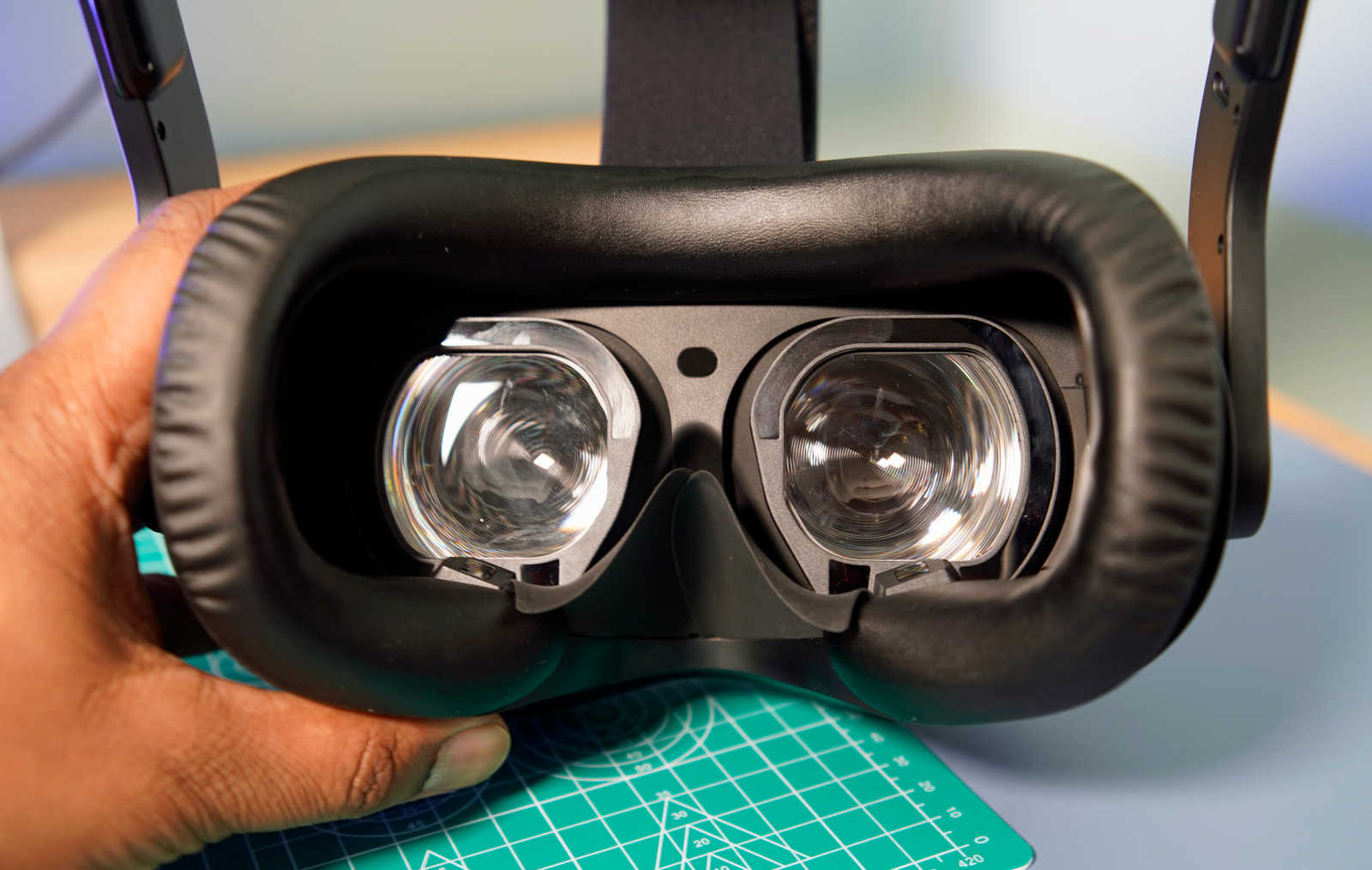Let’s get this straight: the Vive Focus Vision isn’t a competitor to the Meta Quest 3 or the recently released Quest 3S. At $999, how could it be? Instead, it’s another foray for HTC Vive into the high-end VR market, an audience it has cultivated since the launch of the first Vive headset in 2016. While the Meta has leaned more toward cheaper and more mainstream VR headsets over the past decade, HTC Vive has done practically the opposite, targeting VR gearheads and enterprise customers with PC headsets like the Vive Pro 2 and feature-rich standalone models like the Focus 3.
You can think of the Vive Focus Vision as a cross between the Focus 3 and last year’s goggle-like XR Elite. It’s a standalone headset with two 16MP color cameras for mixed reality, built-in eye tracking, and automatic interpupillary distance (IPD) adjustment. It could also attract PC gamers with its $149 DisplayPort wired streaming kit, which gives you an uncompressed view of high-end VR experiences like Half-Life: Alyx.
The hardware: An older CPU
However, as interesting as its new features are, the more I tested the Focus Vision, the more it felt like a missed opportunity for HTC’s Vive VR platform. For one thing, it’s running on the same Snapdragon XR2 chip as the Focus 3 and Quest 2.
This chip originally debuted in 2020, and it seems inexcusable in a high-end headset today. The $300 Quest 3S and $500 Quest 3 both have the XR2 Gen 2 processor, which is 2.5 times faster than the original chip and also has up to eight times faster AI processing. For a high-end headset due out in late 2024, I’d expect HTC to at least match the power of much cheaper competitors, or — even better — incorporate Qualcomm’s new XR2+ Gen 2 chip.
The Focus Vision is still using older Fresnel lens optics, which are prone to artifacts and light bleeding, rather than the sharper pancake lens in the Quest 3. At least HTC put in 12GB of RAM this time around, compared to 8GB in the Focus 3 and Quest 3. And the company still has the resolution advantage over the Quest 3: The Focus Vision offers 2,448 by 2,448 pixels per eye, compared to the Meta’s 2,064 by 2,208 pixels per eye. The HTC Vive’s 120-degree field of view also makes for a much better experience than the 110-degree FOV in the Quest 3.
When it comes to overall build quality and comfort, the Focus Vision is top-notch. Even though it’s made of plastic like the Quest 3, it’s a sturdy device that looks clearly more high-end than Meta’s offerings. Ample cushioning helps keep the Focus Vision comfortable on your forehead and back of your head. And its halo-like head strap, as well as the ability to flip up the visor, make it easily wearable over larger glasses.
Best of all, the Focus Vision has a removable battery on the back of its headstrap. It provides a helpful counterweight to the bulky front-end, and if you have enough spare batteries, it could potentially let you stay in wireless VR all day.
The headset also has a small built-in battery, which lets you keep going with your VR session even when you’re replacing the large rear power cell. This is something we’ll probably never see in a consumer Quest headset, as it’s very expensive to implement, and Meta isn’t building it for enterprise customers who demand constant wireless. (And to be fair, it’s also easy to plug the Quest 3 into a USB battery pack.)
In use
Using the Focus Vision doesn’t feel much different from the Focus — a headset I loved when I reviewed it in 2021, but as a business-focused device I warned that no consumer should really buy it. I suppose this isn’t too surprising, as both headsets share the same basic design, display, and CPU. In standalone VR mode, playing the Maestro demo really made me feel like I was conducting an orchestra (an experience I also had on the Quest 3S), and I had fun moving around some virtual worlds in VR chat.
